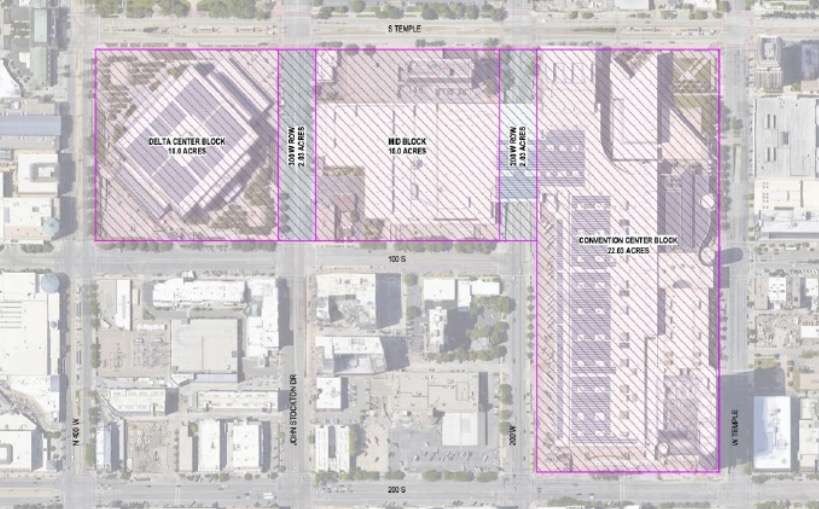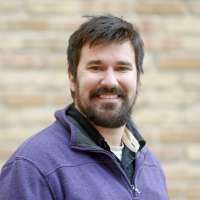Estimated read time: 5-6 minutes
- Salt Lake City is nearing a vote that would help finance downtown revitalization plans by the Delta Center.
- The City Council is scheduled to vote on creating a Convention Center Public Infrastructure District next week.
- County officials estimate that renovations to the convention center and other buildings could exceed $1 billion.
SALT LAKE CITY — Utah's capital city is inching closer to reaching an agreement that would help finance the culture and convention component of a proposed "sports, entertainment, culture and convention district" surrounding the Delta Center downtown.
Salt Lake City Council members are expected to vote next week to approve a new Convention Center Public Infrastructure District, following a public hearing held Tuesday night. It will mark one of the last steps the city is required to take in setting up the legwork for the entire project.
"If you think of (last year's) participation agreement as a roadmap of where we were going, this kind of completes that map, and it adds more detail to, I guess, the route," Salt Lake City Council Chairman Chris Wharton told KSL.com.
Creating a 'financing mechanism'
Allison Parks, Salt Lake City's deputy city attorney, explained to the council Tuesday that it essentially allows for public infrastructure districts, which are joint ventures between local governments and private developers, to "help fund the construction of public improvements" of neighboring buildings like Abravanel Hall and the Utah Museum of Contemporary Art, slated to either be preserved or rebuilt.
County officials estimate the cost of the projects could exceed $1 billion.
Allison Parks, Salt Lake City's deputy city attorney, explained to the City Council Tuesday that it essentially allows for public infrastructure districts, which are joint ventures between local governments and private developers, to "help fund the construction of public improvements."
Salt Lake City's proposed Convention Center Public Infrastructure District would act "a little different" from other such districts, she said. It only covers the Delta Center block, but it would serve as the "financing mechanism" for Smith Entertainment Group's plan to redevelop the arena and the blocks east of it included in the "sports, entertainment, culture and convention district."
Jennifer Bruno, the City Council's executive director, clarified that even though the district would only cover the arena block, funds could still be spent on the buildings east of the arena, included in a separate Capital City Revitalization Zone.
"This new PID, like traditional PIDs, would be a separate legal entity. It will be a governmental entity and, importantly, the debts will not be liabilities for the city," Parks added.

The district would be funded by a few different sources, including the 0.5% sales and use tax that Salt Lake City implemented as part of its partnership agreement with Smith Entertainment Group last year. It would also pull in money from other tax sources, such as sales/use and property tax increments within the Delta Center block and the three blocks tied to the Salt Palace east of the arena.
Parks said there would also be a "small tax" within just the Delta Center block for "administrative costs."
Dealing with a 'wonky' process
City officials held Tuesday's public hearing as it was required by law, but they acknowledge that SB26 gives them very little wiggle room to work with.
Salt Lake City Councilwoman Victoria Petro, who was chairwoman of the council during last year's process, called it a "weird, wonky state-ordained" process that the city has to abide by. As such, it essentially turned Tuesday's hearing into what she called a "public therapy session" rather than anything substantive that could be used to improve the legislation.
"There is a path that we have to walk, as long as things are legally sound (and) as long as things are in accordance with the statute," she said. "There is a predetermined outcome here … and I'm kind of frustrated that it gives the illusion that we can receive feedback."
Tuesday's hearing was much less boisterous than last year's hourslong meetings during the partnership agreement process. Resident Lori Wike was the only person to speak on the measure, voicing concerns about several issues, such as using public funds in private development. She also asked the City Council to potentially hold a second hearing on the matter before voting.
But that's something the city doesn't have time to consider. Although most of the bill goes into law next month or later, it states that the city has until April 15 to submit its proposal to the Utah Governor's Office of Economic Opportunity. It would then go to the Utah Lieutenant Governor's Office to be certified and go into record.
Wharton said the City Council will hold a "special" formal meeting on April 8 to vote on the measure to avoid hiccups in meeting the deadline.
"There were problems waiting until the 15th, and so (this was) our only option," he said.
The next steps
Despite the new agreements being proposed, Wharton said provisions from last year's agreements are in place. For instance, there's still a $900 million cap on money being used for private development, and anything more generated over the next 30 years would go toward public projects.

And while the public hearing likely won't change anything in front of the City Council next week, he said it still provides residents vital information about what's happening downtown. That's important because there are still more steps to go.
Smith has until July 1 to reach a lease agreement with Salt Lake County, per last year's agreement. There are a few other state approvals needed before the full framework of the partnership agreement is complete.
Once that's over, Salt Lake City's next big step would be design standards on future development within the district.
"The comments still help us on all of the future decisions and all of the related decisions of the district, so I really hope that people continue to reach out and share their thoughts," he said.










